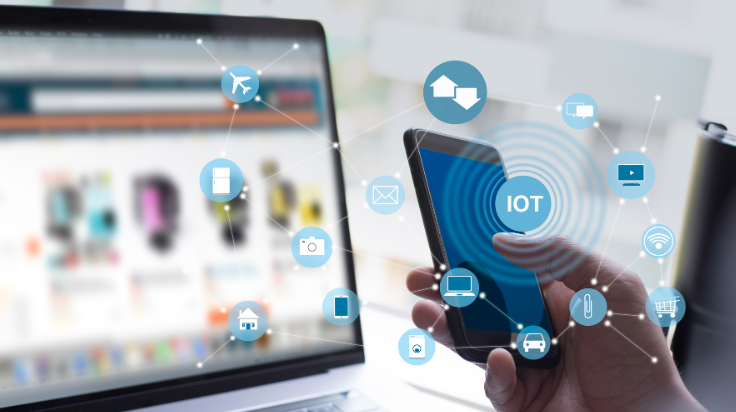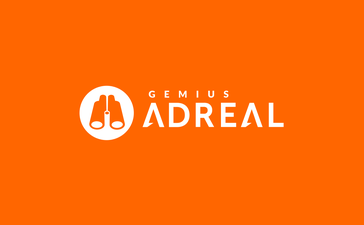
What is the Internet of Things?
The term was coined by the British entrepreneur Kevin Ashton in 1999. It describes a network of objects which, through various sensors and with web connectivity, can communicate amongst themselves and with man. It might be said that they form an ecosystem of sorts. For some, the intense development in such devices provides the opportunity for an easier life, while for others greater day-to-day digitisation is a source of worry and fear.
The Internet of Things in numbers
The number of devices in the Internet of Things is growing year by year. It is predicted that by 2020 some 25–30 billion devices will be web-connected (source: Gartner, November 2014). Despite the growing popularity of these devices, the phrase “Internet of Things” is relatively unknown in Poland. According to studies, more than 78 per cent of those polled had never heard of it.
Our greatest fear: advertising and loss of privacy
The most common threats associated with the use of internet-enabled devices include the fear of constant adverts, according to almost 50 per cent of respondents. Other apprehensions include fear that our loved ones’ data will be leaked (47 per cent) and loss of privacy (43 per cent). To quite a large degree we also fear loss of control over machines (34 per cent).
Meanwhile, as benefits we most often list energy savings (44 per cent) and greater control of our devices (41 per cent), as well as increased safety (38 per cent).
Let’s look at the devices themselves. Many of you are surely of the opinion that the Internet of Things consists for the most part of unnecessary and expensive devices. And I agree. However, I have a simple indicator of whether a particular device has a future or not – it must fulfil a concrete need. Except, our needs change rather quickly. Today I don’t need a fridge that displays the current state of my groceries. I consider it an interesting but non-essential gadget. But, who knows? Maybe in a few years, swayed by brand messaging, I may conclude that it would be great after all to get an SMS telling me that I am out of milk. Especially if I am at the shops at the time.
So let us look at the basic needs of 21st-century man. As a study by GoldenSubmarine in conjunction with IAB shows, 77 per cent of those polled have wireless internet access at home and as many as 76 per cent use mobile devices on a Wi-Fi network at least from time to time.
We most commonly have two to five devices connected the net, a figure declared by 71 per cent of participants. I did a count at home and have eight devices permanently connected to my home Wi-Fi network. So, looking at the study results, I am well above average.
A device for each need
The Internet of Things has grown to such an extent that practically every need has a corresponding device. Below I list a few gadgets which I found interesting.
Mental health
Healthy sleep is the best way to maintain a sense of wellbeing. However, as you may well guess, measuring its quality with electronic gadgets is difficult.
We can measure sleep quality in different ways – there are special smartphone apps, and fitness bracelets have also enjoyed recent popularity. However, the most convenient and intuitive means of measurement will be the pillow. Some time ago on Kickstarter I came across the ZEEQ project, the smart pillow which not only analyses particular phases of sleep, but also helps us to drop off by playing our favourite music, stops us from snoring, and finally wakes us up at the most appropriate moment.
Safety
Every biker knows that the most important item of safety protection when riding is a helmet. That’s why Skully came into being – the augmented-reality smart helmet. Marcus Weller, company founder, fell upon the idea when he heard about a biker who had an accident while looking at a road sign.
Skully works similarly to Google Glass. In the corner of the visor a heads-up display serves as a rear-view mirror (the back of the helmet sports a wide-angled camera which eliminates blind spots). Beside this it has GPS navigation, and informs the cyclist of unexpected situations on the road, congestion or approaching bends. Through cooperation with other devices via Bluetooth we can answer the phone, have a conversation or listen to music.
Another example of enhancements to our sense of safety comes in the form of smart locks. There has long been a rash of such devices on websites such as Kickstarter and Indiegogo. The operating principle is simple; the traditional key is replaced by the smartphone, Bluetooth technology and an electronic key.
These are just a few examples of devices in the Internet of Things. And new ideas are appearing on a near-daily basis. We already have smart homes, cars, fridges, ovens, thermostats and televisions; mugs which tell us if we are drinking enough water, forks ... the list goes on. With these few examples I wanted to demonstrate that technology currently has an answer to each of our needs.
The future and a summary
Let us not fool ourselves, such devices, whether we want it or not, are with us for life. Why so? Because as consumers we constantly expect more, and technology is there to meet those expectations.
A simple example. Consider what you expected of the telephone 15 years ago. The Nokia 3310 had to send SMSs and make calls. Then, we wanted to be able to set a colour screen background, send emoticons as graphics and use polyphonic sounds. Cool! Now we carry mini computers around in our pockets – smartphones are several times more powerful than the on-board computer for the Apollo mission. We receive and send emails from it, watch films, measure our activity, take better pictures than certain cameras, and even use it to control our oven or vacuum cleaner.
And in this way we pay for the digitisation of day-to-day existence with our data, but then that is now the most common form of currency on the Internet. It is important to find a balance between how much we want to use such devices and how much data on ourselves and our loved ones we are willing to give away.
The text was published on Wieciecownecie.pl


